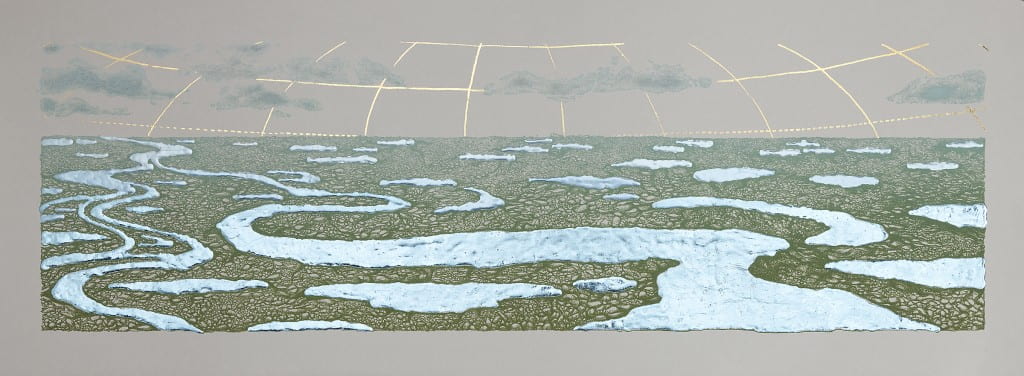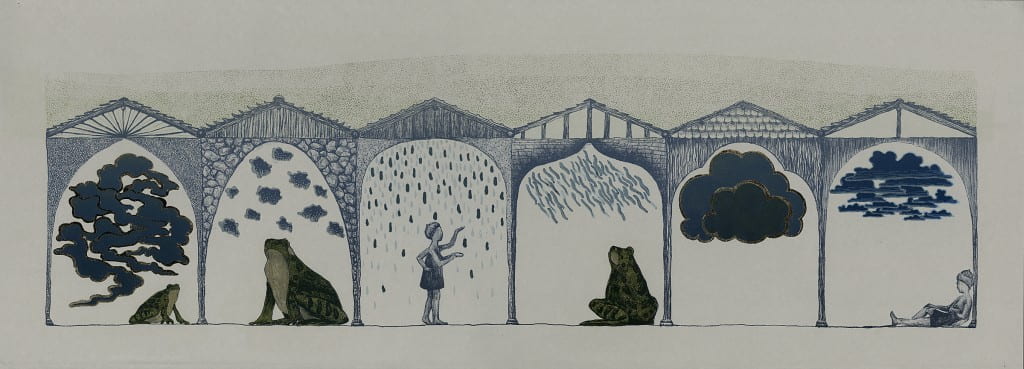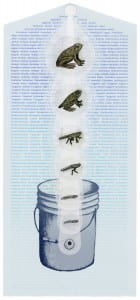The relationship between people and the land they inhabit thematically connects my research, and this project draws loosely on autobiographical experiences, from both my childhood in rural Alaska and my periodic relocations throughout my adult life. I grew up on the Yukon-Kuskokwim River Delta, an environment defined by water. The rivers and sloughs meander across the tundra, with countless small ponds and oxbow lakes sustained through snowmelt. The ground is soggy, with a permafrost barrier holding water at the surface. The river often floods in the spring, as melt water from upstream pushes against an ice dam that has yet to drift into the sea. As wet as the region appears, though, it receives little precipitation; the ecosystem depends on flooding and permafrost to sustain life.
The river is a thoroughfare, with boats and barges moving from community to community, and ultimately out to sea. This network of water literally connects people with each other and the outside world. The rivers provide sustenance, commerce, education, and recreation, but without water, the system disappears. Since leaving Alaska, I have lived in many different places, each with distinct conditions regarding resource allocation. In the deserts of New Mexico, water rights are established generations in the past, while in Georgia and Florida, long-term drought coupled with disputes over watersheds and the rights of communities downstream influence the discourse. In Iowa, communities suffer the seemingly contradictory scourges of flooding and drought, while in Wisconsin, the abundance of water in the Great Lakes benefits only those communities that lie directly adjacent to the water. The landscapes I draw refer to these disparate locales, from deserts and boulder formations that evoke regions of the Southwest to references to agriculture and livestock that speak to uses of the Midwestern landscape. The story begins on the tundra, with the drying up of rivers and ponds, but as the series continues and expands to include diverse habitats, the land itself begins to disintegrate.
This series of lithographic prints presents a variety of landscapes altered by drought, with a pair of small figures moving through many of its panoramic compositions. The figures’ journey echoes the changing environments they traverse, with surreal topographies shifting into an unsettled future. The story ends without a clear resolution; the water has evaporated and drained away, but it has not ceased to exist.
 Downstream
Downstream
2014, lithograph, foil, 11 x 30 inches
 Swim
Swim
2014, lithograph, foil, 11 x 30 inches
 Overland
Overland
2014, lithograph, foil, 11 x 30 inches
 Secret Place
Secret Place
2014, lithograph, foil, 11 x 30 inches
 Underworld
Underworld
2014, lithograph, foil, 11 x 30 inches
 Boulders2014, lithograph, foil, 11 x 30 inches
Boulders2014, lithograph, foil, 11 x 30 inches
 Sideways
Sideways
2014, lithograph, foil, 11 x 30 inches
 Water Sheds
Water Sheds
2014, lithograph, foil, 11 x 30 inches
